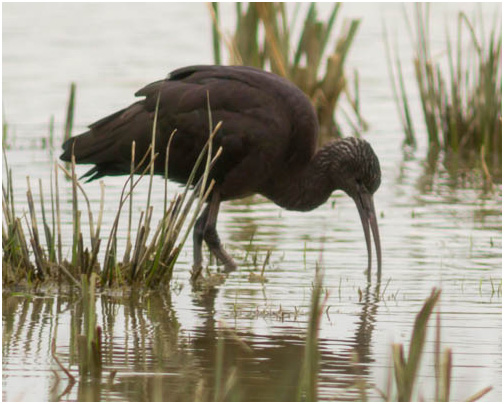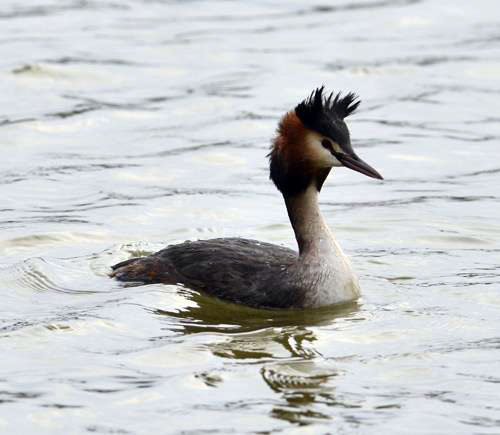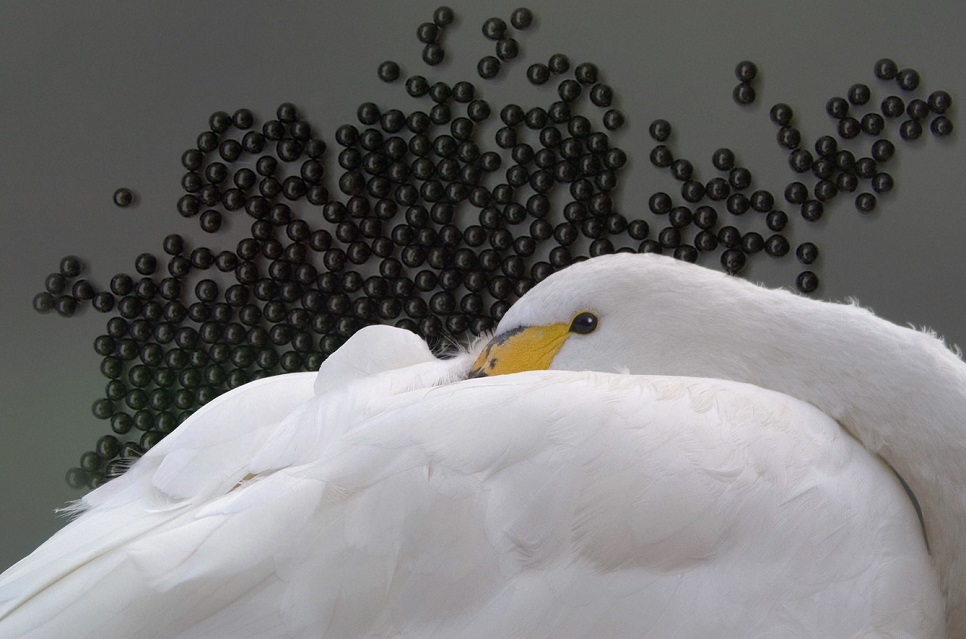Two unusual visitors a WWT Arundel
A glossy ibis was seen from the Lapwing Hide on Good Friday. A mute swan chased the heron-like ibis away but it was back in the afternoon and spotted from the Sand Martin hide on mid-morning on Saturday. Ibises are not regular visitors to the UK but occasionally stray over to us from Southern Europe.

A great crested grebe dropped into the waters between the Ramsar hide and the Sand Martin on the afternoon of March 25. The grebe spent a few days here, delighting visitors who loved its distinctive head plumage.
Red shanks have been in everyday, feeding in the mud flats that are left after the draining of our main lake. The diggers that arrive this week to start landscaping the final phase of the Arun Riverlife project.
Cold weather has been slowing things down this spring , particularly the insect population. Brimstone and comma butterflies have not emerged, no bees are about and overall insect activity is very low. Wild mallard went down on nests in response to spring’s lengthening days. Their newly hatched ducklings are struggling to find insects to eat for protein.
The weather has delayed other reserve favourites. There are no signs of bats roosting yet in the boxes on our hides. The spawning time for the toads has been delayed and is getting later and later now. Great tits and nut hatches have been singing for territory but nest building has slowed down again. Plants are slowly sprouting, influenced by the lengthening daylight. Last year colt’s foot flowers were finishing around now and this year they are barely started. Marsh marigold is in bud at the boat jetty, waiting to flower.
I was surveying for water vole signs in the lost reed last week – the voles are becoming more active here and the latrines and feeding piles indicate a population density that rival Wetland Discovery area of the reserve! During my walk through the reeds – there are no real paths- my ‘gentle’ steps flush over 80 snipe.
At the Sand Martin hide we have turned the recordings of the colony back on to lure migrating martins into the hide in but the weather has slowed their migration as well. For the past few years the sand martins were visiting the hide at Easter but we have not seen the birds yet this season. Three oystercatchers were at the hide this morning. Six egrets roosted overnight in the willows to the right of the Ramsar hide overnight last Thursday.
A grey heron takes off as I approach the Lapwing hide. I watch a displaying lapwing dive bomb a pheasant. Shelducks, teal and gadwall dabble in the channels while a shoveller waddles across the far bank. Staff members have spotted a barn owl here at the end of the day, flying over the wet grassland and among the far trees.


